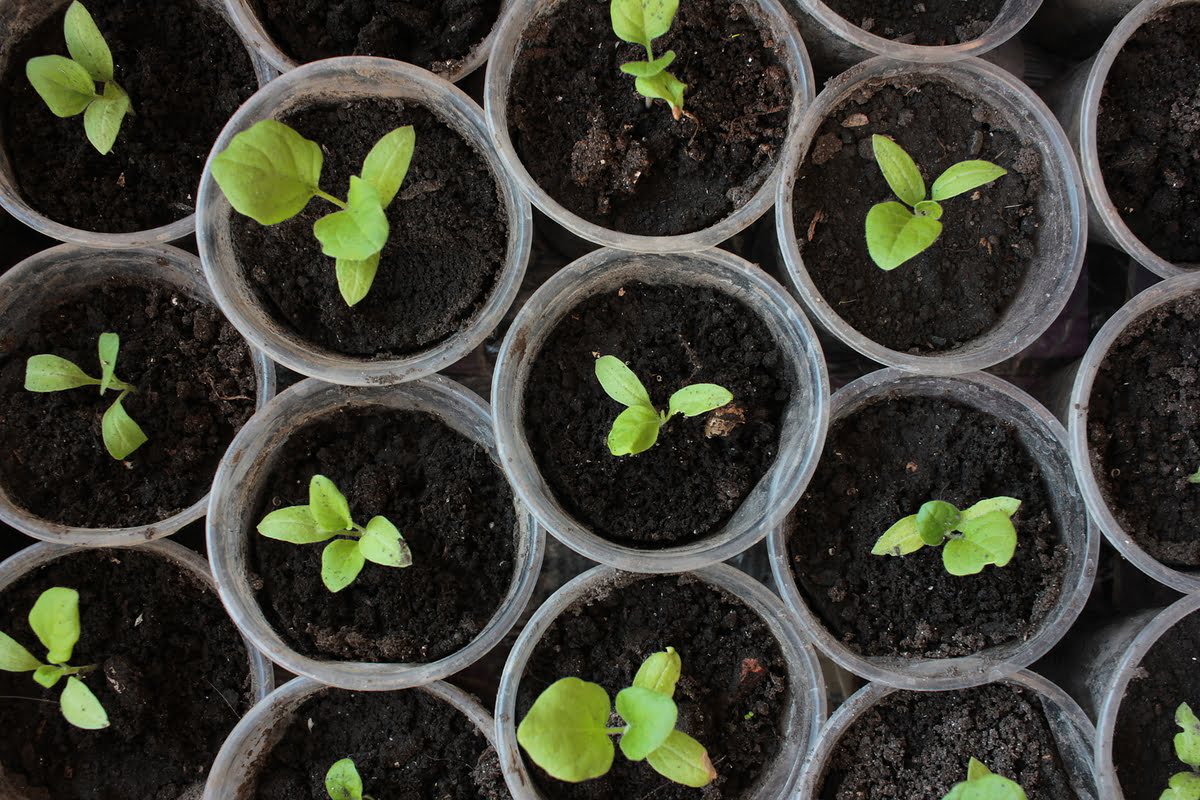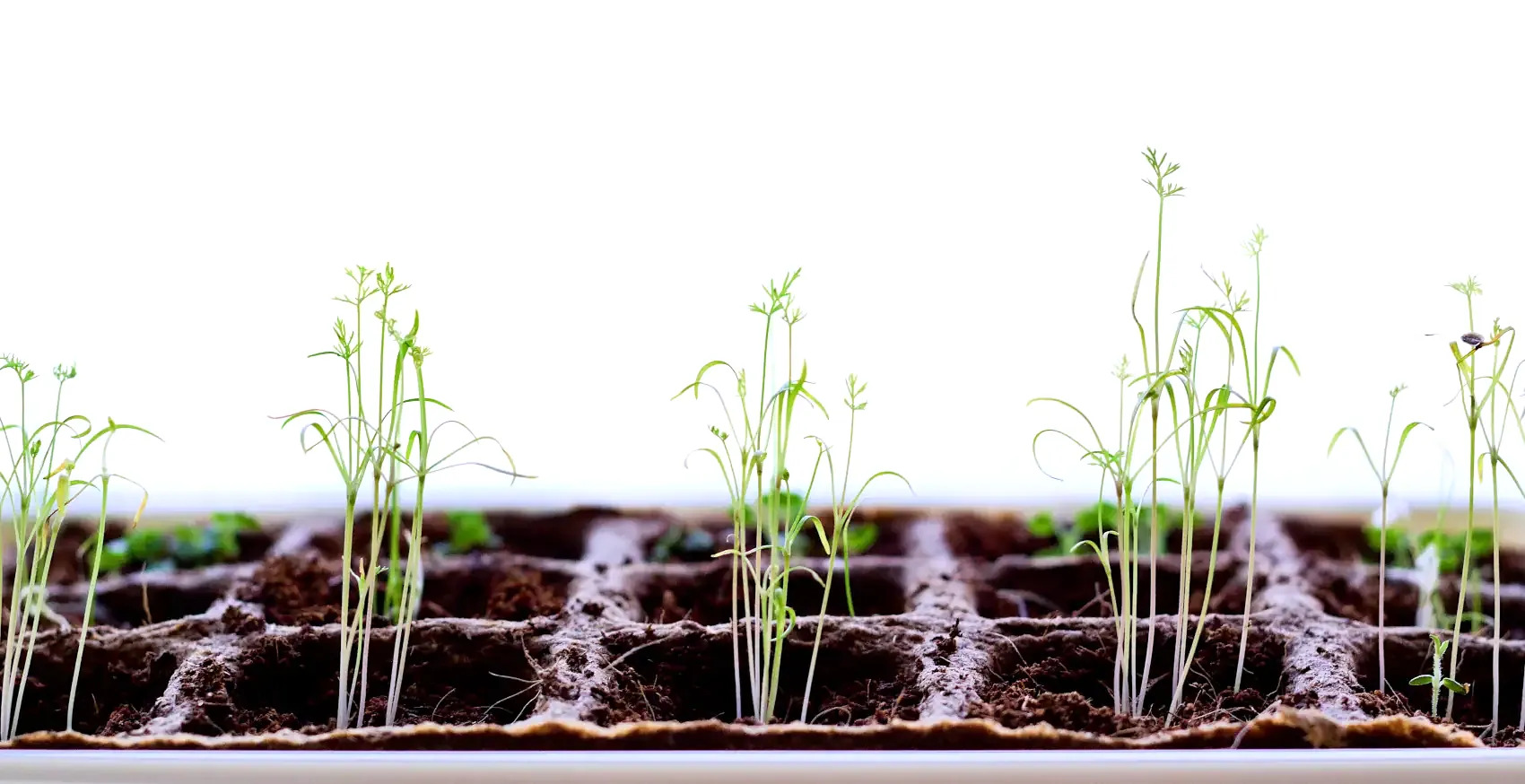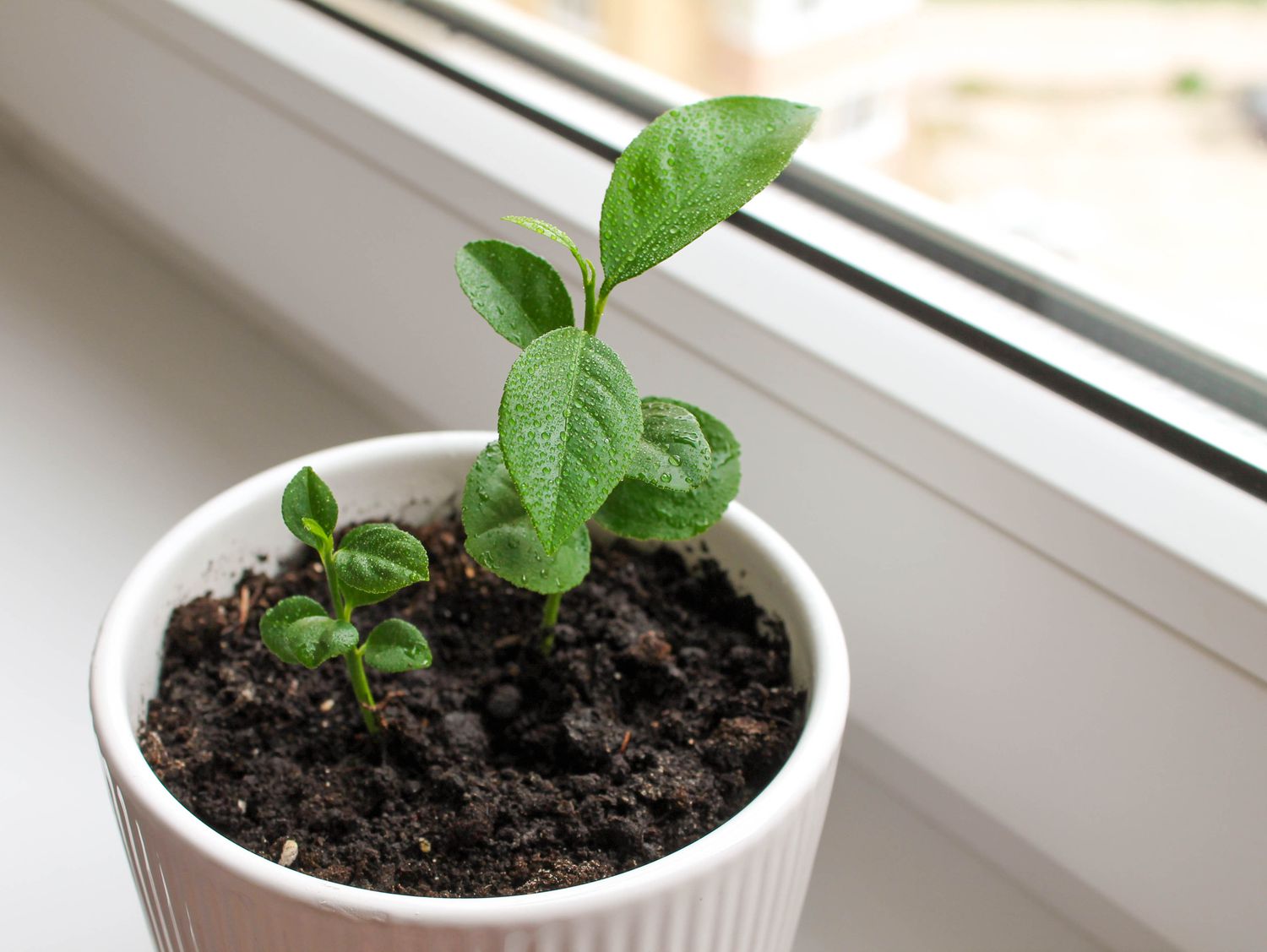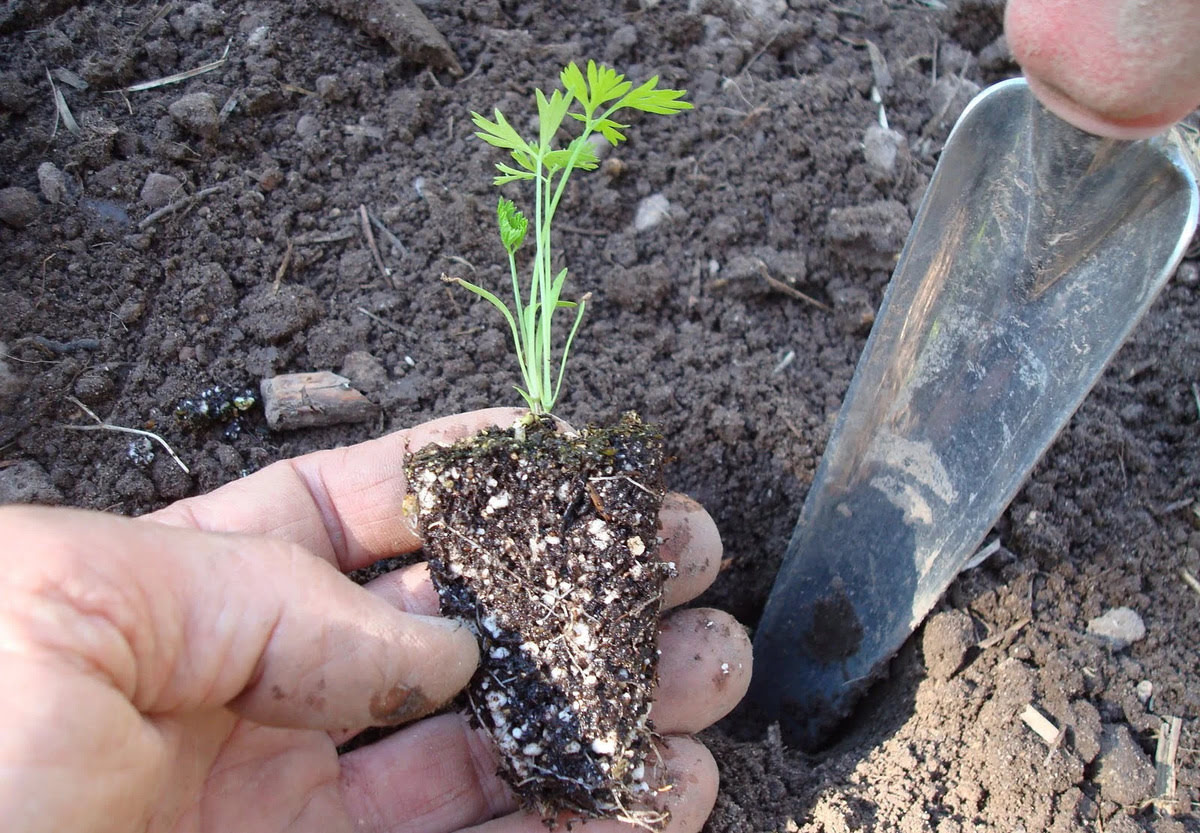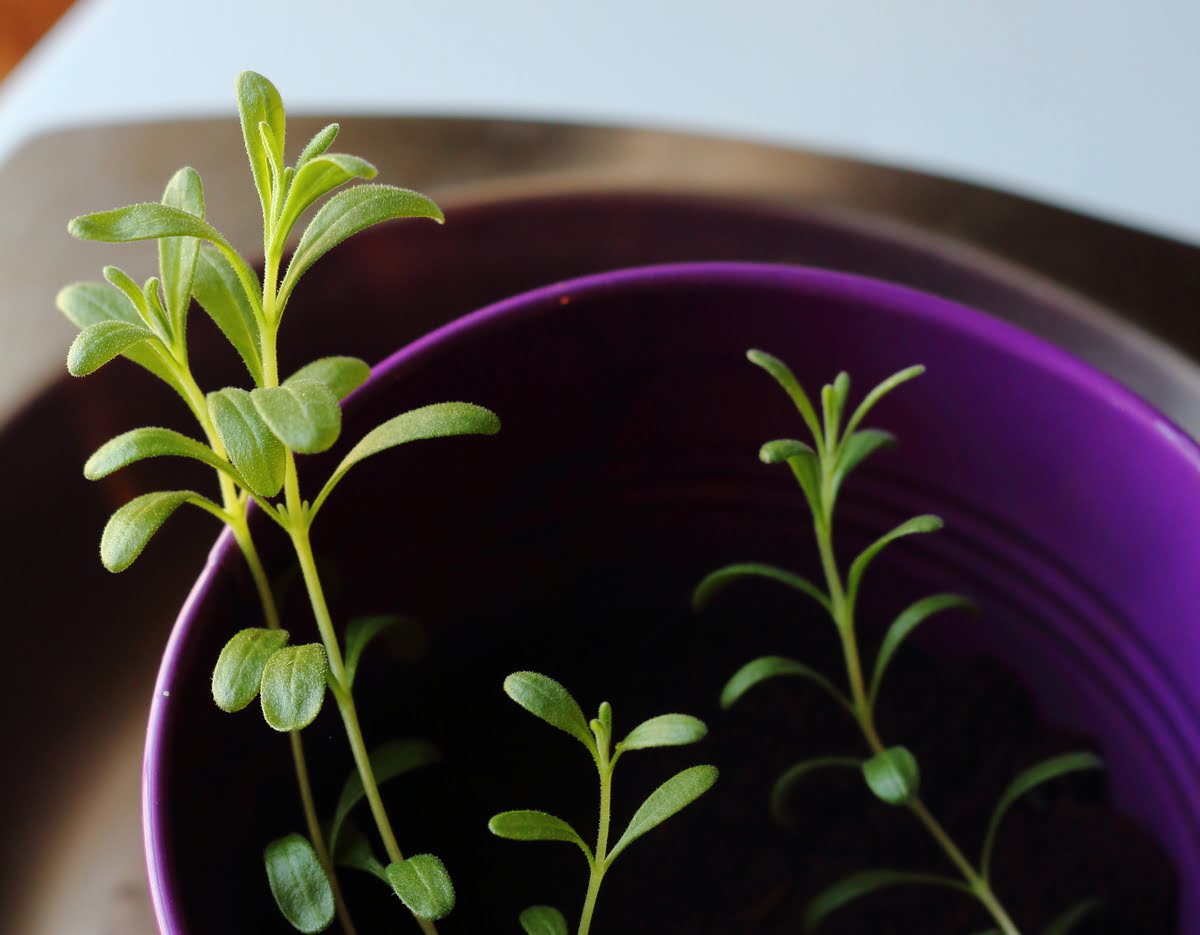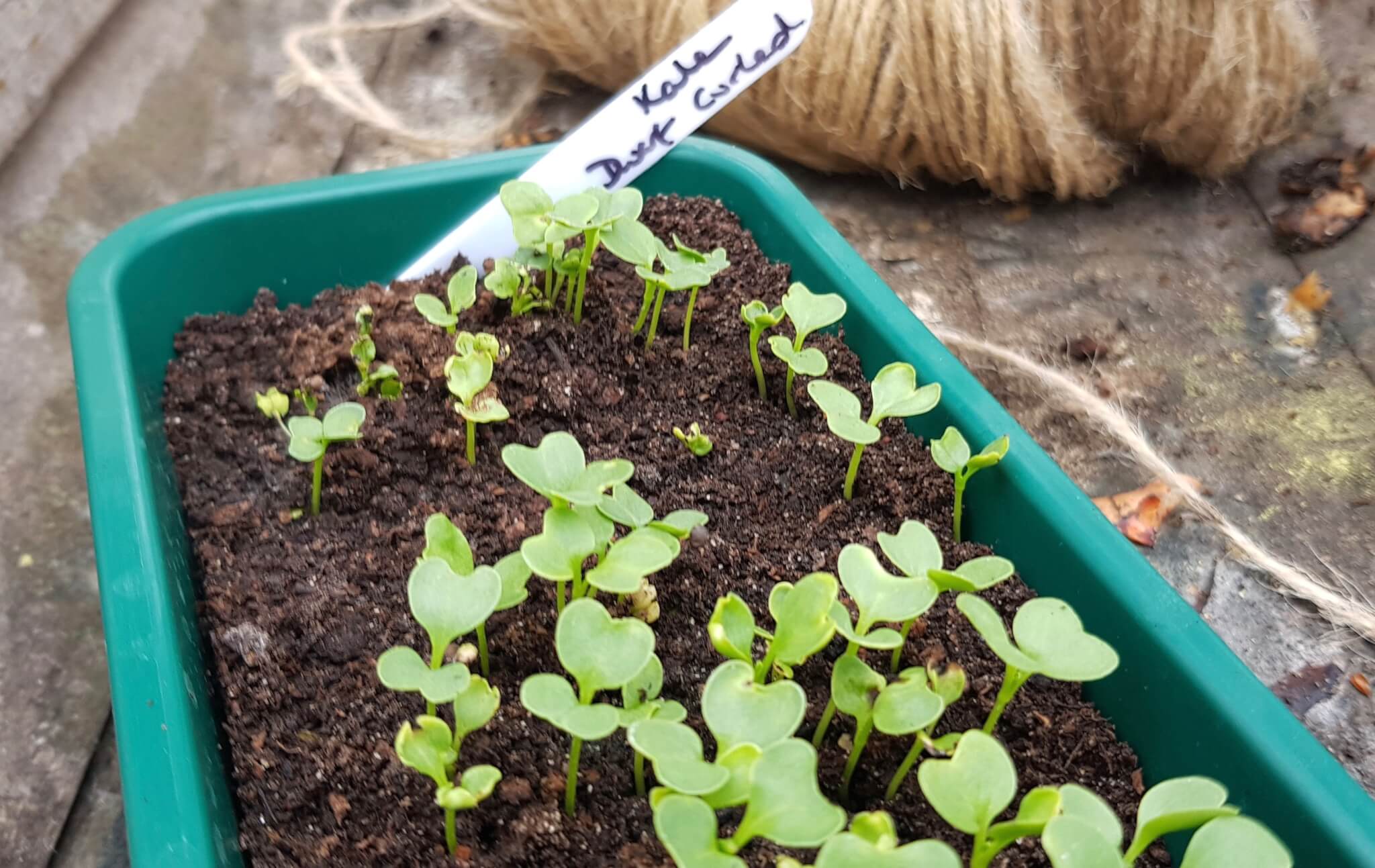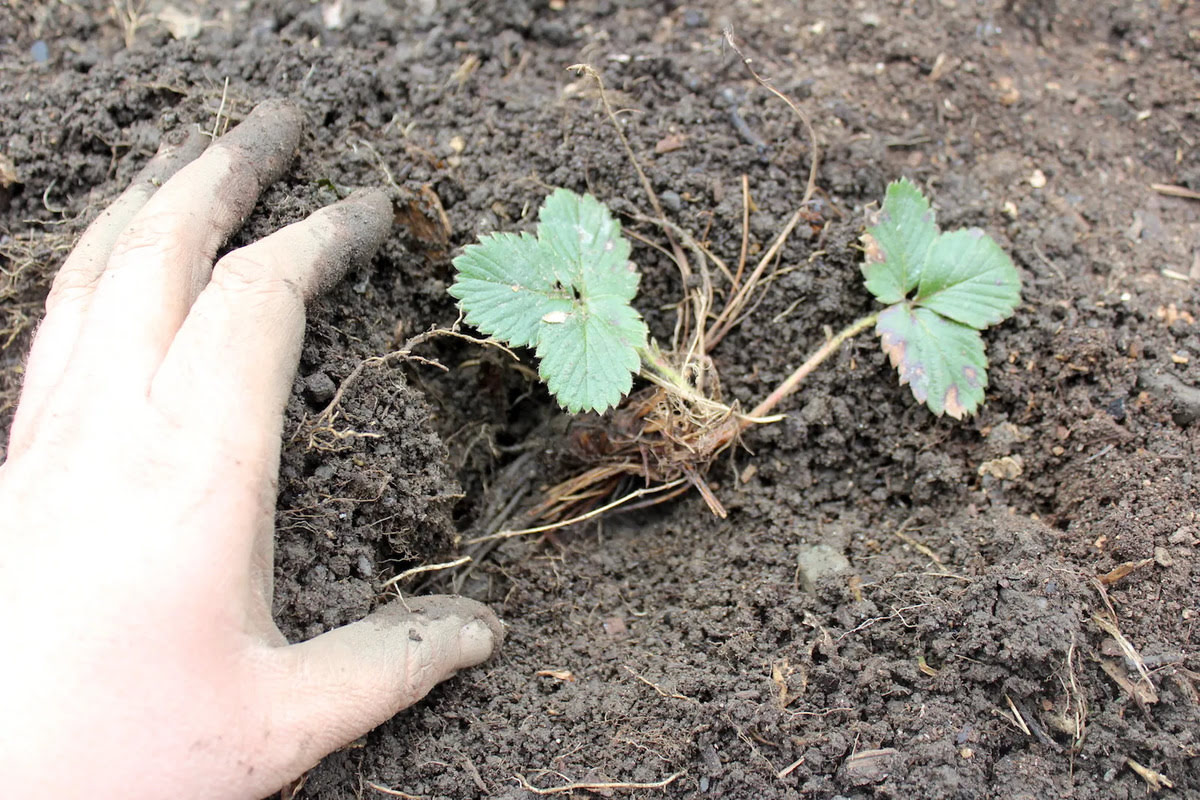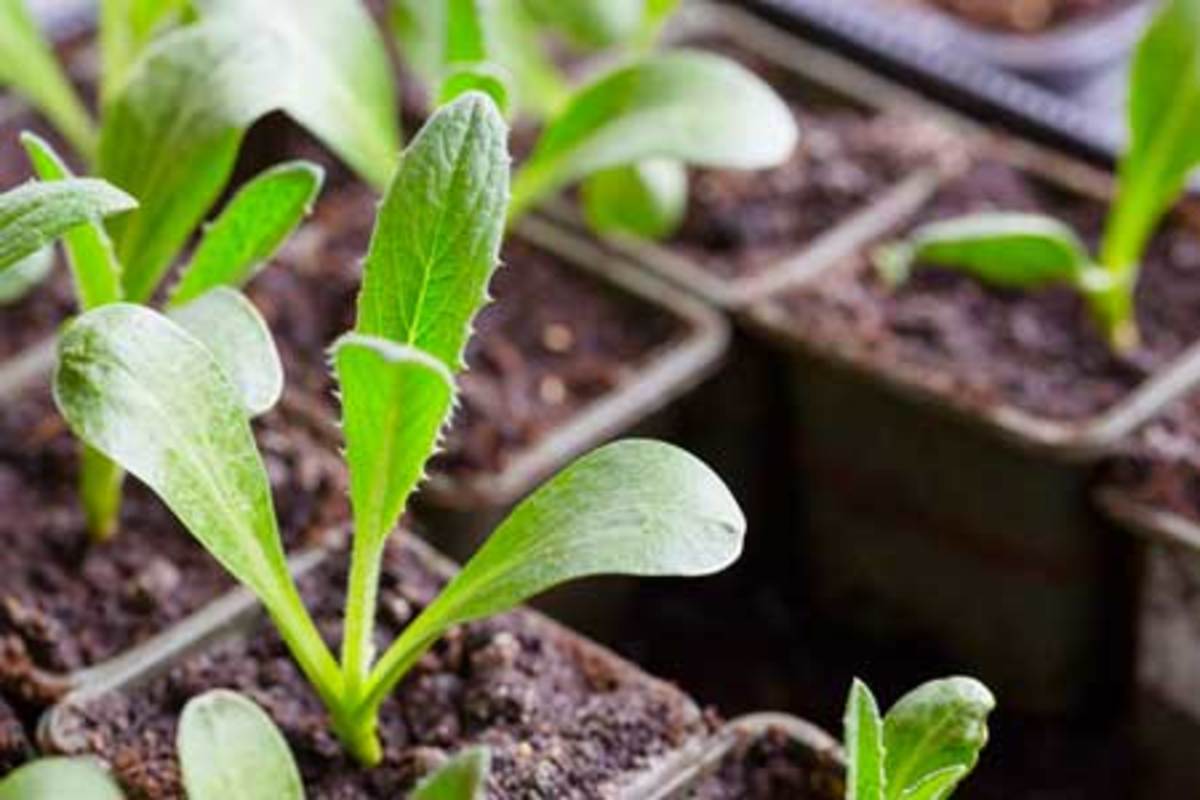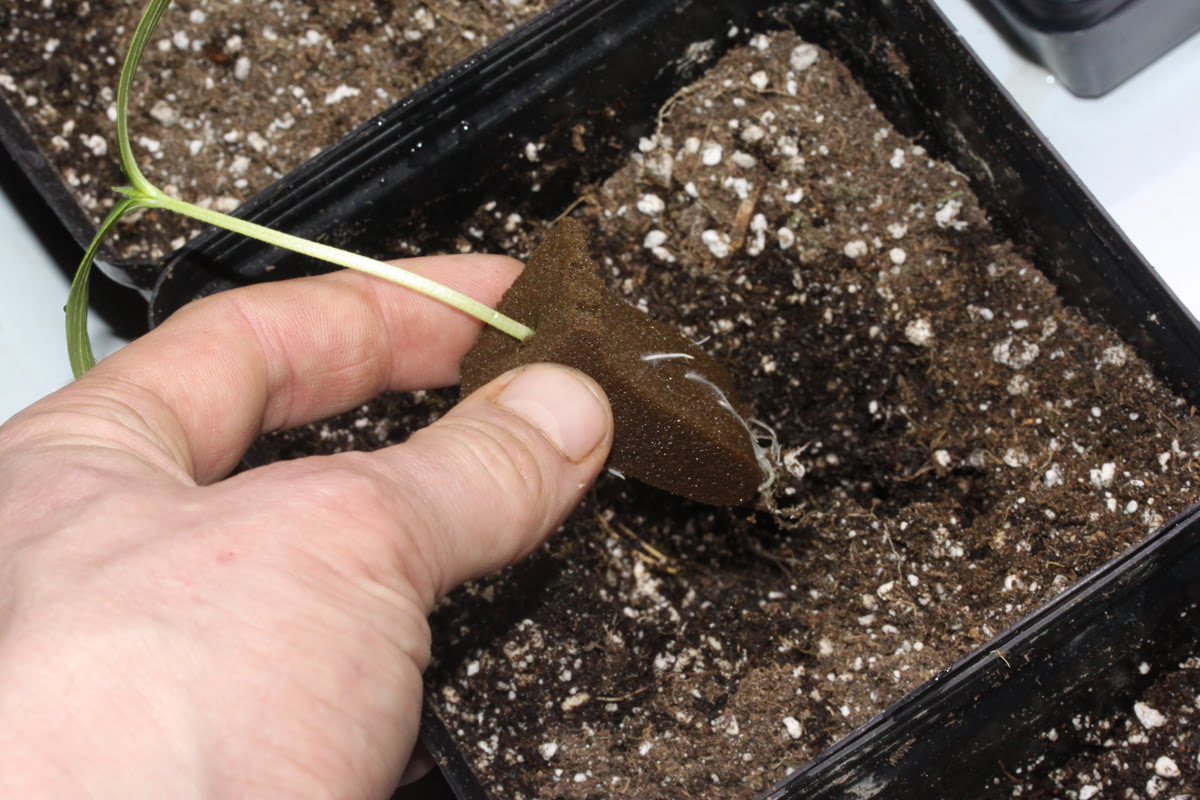Home>Types of Gardening>Edible Gardening>When To Transplant Cucumber Seedlings To Larger Pots
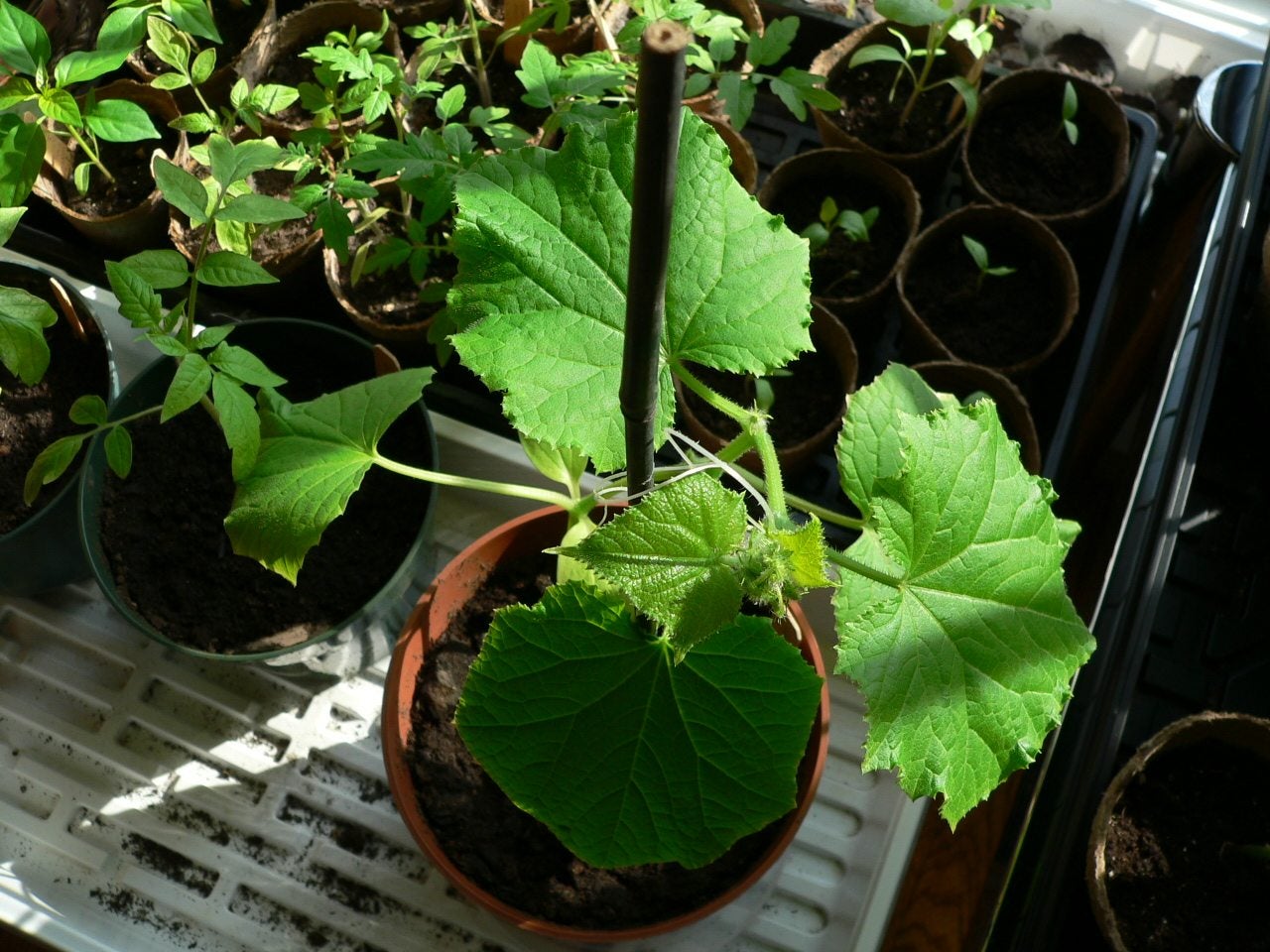

Edible Gardening
When To Transplant Cucumber Seedlings To Larger Pots
Modified: February 9, 2024
Learn when to transplant cucumber seedlings to larger pots in this informative guide on edible gardening.
(Many of the links in this article redirect to a specific reviewed product. Your purchase of these products through affiliate links helps to generate commission for Chicagolandgardening.com, at no extra cost. Learn more)
Table of Contents
- Introduction
- Importance of Transplanting Cucumber Seedlings
- Signs that Seedlings are Ready for Transplanting
- Choosing the Right Time for Transplanting
- Preparing the Larger Pots for Transplanting
- Transplanting Cucumber Seedlings Step-by-Step
- Aftercare and Maintenance of Transplanted Seedlings
- Common Mistakes to Avoid During Transplanting
- Benefits of Transplanting Cucumber Seedlings to Larger Pots
- Conclusion
Introduction
Welcome to the world of edible gardening! If you have a green thumb and a love for fresh, homegrown produce, then you’ve come to the right place. Edible gardening allows you to grow your own delicious and nutritious fruits, vegetables, and herbs right in your backyard or even on your balcony. One plant that is particularly popular among edible gardeners is the cucumber.
Cucumbers are not only versatile in the kitchen, but they’re also a joy to grow. However, in order to give your cucumber plants the best chance at thriving, proper transplanting is essential. Transplanting cucumber seedlings to larger pots is an important step in their growth journey. It allows the seedlings to establish stronger roots, have more room to grow, and ultimately produce a bountiful harvest.
In this article, we will dive into the details of when to transplant cucumber seedlings to larger pots. We will discuss the signs that indicate the seedlings are ready for transplanting, the optimal timing for the transplant, and the step-by-step process of how to successfully transplant your cucumber seedlings. Additionally, we’ll cover the aftercare and common mistakes to avoid during the transplanting process.
Whether you’re new to edible gardening or have been growing your own food for years, this article will provide you with the knowledge and guidance you need to ensure your cucumber plants thrive. So, let’s get started on this green journey of transplanting cucumber seedlings!
Importance of Transplanting Cucumber Seedlings
Transplanting cucumber seedlings from their initial seed trays to larger pots is a critical step in their growth process. It provides several benefits that contribute to the overall success of your cucumber plants. Let’s explore the reasons why transplanting is so important:
Promotes Root Development: When cucumber seedlings are transplanted into larger pots, it allows their roots to spread out and establish a stronger root system. This leads to better nutrient uptake and water absorption, which in turn promotes healthier and more vigorous plant growth.
Prevents Overcrowding: If you leave your cucumber seedlings in their initial seed trays for too long, they can become overcrowded. This can lead to stunted growth, increased competition for resources, and a higher risk of disease and pest infestation. Transplanting allows each seedling to have its own space, reducing overcrowding and ensuring optimal growth conditions.
Allows for Proper Nutrient Availability: As cucumber plants grow, their nutrient requirements increase. By transplanting them to larger pots, you can provide a nutrient-rich soil mix that will sustain their nutritional needs throughout their growth cycle. This ensures that your cucumber plants have access to the essential nutrients they need for healthy development and abundant fruit production.
Extends the Growing Season: Transplanting cucumber seedlings to larger pots allows you to start them indoors or in a greenhouse before the outdoor growing season begins. This gives your plants a head start in their growth, allowing you to enjoy an extended harvest season. Additionally, you can transplant seedlings back inside as the weather cools, allowing you to continue growing cucumbers well into the fall.
Facilitates Pest and Disease Management: When cucumber seedlings are crowded together, it becomes more difficult to monitor and control pest and disease issues. Transplanting seedlings to larger pots provides better air circulation and spacing, making it easier to identify and manage any pests or diseases that may arise. It also reduces the risk of spreading infections between plants, promoting overall plant health.
Transplanting cucumber seedlings is a vital step in ensuring the success of your edible garden. It not only promotes healthier root development and nutrient availability but also prevents overcrowding and facilitates pest and disease management. By understanding the importance of transplanting, you can provide optimal growing conditions for your cucumber plants and enjoy a bountiful harvest.
Signs that Seedlings are Ready for Transplanting
Transplanting cucumber seedlings at the right time is crucial for their successful establishment in larger pots. Here are some signs to look out for to determine when your seedlings are ready for transplanting:
- Strong and Well-Established Roots: Check the bottom of the seed tray or pot to see if the roots are poking out of the drainage holes. This indicates that the seedlings have developed a strong root system and are ready for transplantation.
- Multiple Sets of True Leaves: True leaves are the second set of leaves that appear after the initial cotyledon leaves. When cucumber seedlings have three or more sets of true leaves, it is a sign that they have developed sufficiently and can handle the stress of transplanting.
- Vibrant and Healthy Leaf Growth: Observe the overall health and vigor of the cucumber seedlings. Look for vibrant green leaves without any signs of discoloration, wilting, or pest damage. Healthy leaf growth indicates that the seedlings are strong and ready for the next stage of growth.
- Sturdy Stem and Adequate Height: Transplant your cucumber seedlings when they have grown to a height of around 3 to 4 inches (7.5 to 10 cm). The stems should be sturdy and able to support the weight of the plant. Avoid transplanting seedlings that are too small or fragile, as they may struggle to survive the transplanting process.
- Rootbound Seedlings: Gently lift the seedling out of its container and check the root system. If the roots have grown densely and wrap around the inside of the pot, your seedlings are rootbound. Transplanting them into larger pots will provide the necessary room for the roots to grow and prevent future stunted growth.
It’s important to note that these signs can vary slightly depending on the cucumber variety and the specific growing conditions. However, by observing the overall health, leaf growth, root development, and stem strength of your cucumber seedlings, you can confidently determine when they are ready for transplanting.
Choosing the Right Time for Transplanting
Choosing the right time for transplanting cucumber seedlings is crucial to ensure their successful transition to larger pots. The timing will depend on various factors, including the specific cucumber variety, your local climate, and the planned planting date. Here are some guidelines to help you determine the optimal time for transplanting:
- Frost-Free Dates: Cucumbers are warm-season crops and cannot tolerate frost. Check the average last frost date in your area to determine when it’s safe to transplant your seedlings outdoors. It’s generally recommended to wait until after the last frost to prevent damage to your plants.
- Soil and Air Temperature: Cucumber seedlings thrive in warm soil and air temperatures. Wait until the soil temperature reaches around 65 to 70°F (18 to 21°C) before transplanting. This ensures that the seedlings will have optimum growing conditions and will be better able to withstand any temperature fluctuations.
- Seedling Development: Transplant your cucumber seedlings when they have reached the appropriate size and stage of development. As mentioned earlier, look for well-established roots, multiple sets of true leaves, healthy leaf growth, and sturdy stems. Avoid transplanting seedlings that are too small or fragile.
- Hardening Off: Before transplanting your cucumber seedlings directly into the garden or larger pots, they need to be acclimated to outdoor conditions. This process, known as hardening off, involves gradually exposing the plants to outdoor elements such as sunlight, wind, and temperature fluctuations. Start hardening off the seedlings a week or two before transplanting by placing them outside for a few hours each day, gradually increasing the exposure over time.
By considering factors such as frost-free dates, soil and air temperature, seedling development, and hardening off, you can determine the right time to transplant your cucumber seedlings. Remember to be mindful of your specific climate and growing conditions, as they can vary from region to region. Taking these factors into account will help ensure the successful establishment of your cucumber plants in their new pots.
Preparing the Larger Pots for Transplanting
Before transplanting your cucumber seedlings into larger pots, it’s essential to ensure that the pots are prepared and ready to provide the optimal growing environment. Here are some steps to follow when preparing the larger pots:
- Choose the Right Size: Select pots that are at least 12 to 14 inches (30 to 35 cm) in diameter and have a depth of 12 inches (30 cm) or more. Cucumbers have an extensive root system and need ample space to grow, so choose pots that will accommodate their growth for the entire season.
- Select Quality Potting Mix: Use a high-quality potting mix that is well-draining and rich in organic matter. Avoid using garden soil, as it can become compacted and hinder root development. The potting mix should retain moisture while allowing excess water to drain easily.
- Ensure Proper Drainage: To prevent waterlogged roots, ensure that the pots have adequate drainage holes at the bottom. You can also place a layer of small rocks or broken pottery pieces at the bottom of the pots to facilitate proper drainage.
- Amend with Compost or Organic Fertilizer: Enhance the nutrient content of the potting mix by mixing in compost or organic fertilizer. This will provide a steady supply of nutrients to the cucumber plants as they grow, promoting healthy foliage and plentiful harvests.
- Pre-Moisten the Potting Mix: Before transplanting your seedlings, moisten the potting mix slightly to ensure that it is evenly damp. This will help the plants establish quickly and prevent dry pockets within the potting mix that can create stress for the seedlings.
By following these steps, you can ensure that your larger pots are properly prepared to provide the ideal growing conditions for your cucumber seedlings. The right pot size, high-quality potting mix, proper drainage, nutrient amendment, and pre-moistening will set the stage for successful transplanting and healthy growth of your cucumber plants.
Transplanting Cucumber Seedlings Step-by-Step
Transplanting your cucumber seedlings to larger pots may seem daunting, but by following these step-by-step instructions, you can ensure a successful and smooth transition:
- Prepare the pots: Fill the larger pots with moistened potting mix, leaving about an inch (2.5 cm) of space below the rim. Ensure that the potting mix is evenly distributed and lightly tamped down.
- Make holes: Using your finger or a small gardening tool, create holes in the potting mix that are slightly wider and deeper than the root ball of your cucumber seedlings. Space the holes based on the recommended spacing for your specific cucumber variety.
- Remove seedlings from the tray: Gently remove the cucumber seedlings from their seed tray, being careful not to damage the delicate roots. You can use a spoon or your fingers to carefully lift the seedlings out of the tray.
- Plant the seedlings: Place each cucumber seedling into a hole in the larger pot, ensuring that the root ball is covered with potting mix. Gently press the potting mix around the base of the seedling to secure it in place.
- Water thoroughly: After transplanting, water the pots thoroughly to settle the potting mix around the new transplants. Ensure that the water penetrates the root zone but avoid waterlogging the plants.
- Provide support (if needed): If you are growing vining cucumber varieties that require support, install trellises or stakes in the pots at the time of transplanting. This will provide support as the plants grow and prevent them from sprawling on the ground.
- Place in ideal location: Choose a location that receives full sun for at least 6 to 8 hours a day. Keep in mind that cucumbers prefer warm temperatures, so select a spot that offers adequate warmth for optimal growth.
- Monitor and care for the transplants: Keep a close eye on your transplanted cucumber seedlings. Water them regularly, ensuring that the potting mix remains moist but not overly saturated. Monitor for any signs of stress or pest/disease issues and take appropriate action.
By following these step-by-step instructions, you can successfully transplant your cucumber seedlings into larger pots. Remember to handle the seedlings with care, provide the necessary support, and monitor their progress as they adjust to their new environment. With a little attention and care, your cucumber seedlings will thrive and reward you with a bountiful harvest.
Aftercare and Maintenance of Transplanted Seedlings
Once you’ve successfully transplanted your cucumber seedlings to larger pots, it’s important to provide proper aftercare and maintenance to ensure their continued growth and health. Here are some key steps to follow:
- Watering: Water your transplanted cucumber seedlings regularly to keep the potting mix evenly moist. Cucumbers have shallow root systems, so it’s crucial to avoid drying out the soil. Water deeply and allow the top inch of the soil to dry out before watering again.
- Fertilizing: Feed your cucumber plants with a balanced organic fertilizer every two to three weeks to provide essential nutrients. Follow the package instructions for application rates and ensure you choose a fertilizer suitable for edible plants.
- Pruning and Training: Monitor the growth of your cucumber plants and regularly remove any dead or yellowing leaves. If you are growing vining cucumber varieties, gently train the vines onto the trellis or support structure to promote upward growth and healthy air circulation.
- Pest and Disease Control: Keep an eye out for common pests such as aphids, cucumber beetles, and powdery mildew. Regularly inspect your plants and take appropriate measures, such as using organic pest control methods or introducing beneficial insects, to prevent and manage any pest or disease issues.
- Provide Adequate Sunlight: Ensure that your cucumber plants receive at least 6 to 8 hours of full sunlight each day. Consider adjusting the positioning or relocating the pots if necessary to maximize sun exposure.
- Monitor for Maturity: Regularly check your cucumber plants for signs of maturity. Harvest the cucumbers when they reach their appropriate size and color, depending on the specific variety. Regular harvesting encourages the plant to produce more cucumbers.
- Regular Maintenance: Remove any weeds that compete with your cucumber plants for water and nutrients. Weeds can also harbor pests or diseases that can affect your plants. Monitor soil moisture levels, mulch around the plants to retain moisture, and provide additional support for heavy fruits, if necessary.
By following these aftercare and maintenance steps, you can promote the health, growth, and productivity of your transplanted cucumber seedlings. Remember to provide consistent care, address any pest or disease issues promptly, and harvest your cucumbers at their peak to enjoy a rewarding edible gardening experience.
Common Mistakes to Avoid During Transplanting
Transplanting cucumber seedlings may seem straightforward, but there are some common mistakes you should avoid to ensure the success of your plants. By being aware of these potential pitfalls, you can make the transplanting process smoother and give your cucumber seedlings the best chance for healthy growth. Here are some common mistakes to avoid:
- Transplanting Too Early: It’s important to wait until your cucumber seedlings are of the appropriate size and have developed a strong root system before transplanting. Transplanting too early can result in stunted growth and poor establishment.
- Using Poor-Quality Soil: Choose a high-quality potting mix that is well-draining and nutrient-rich. Using low-quality or compacted soil can hinder root development and hamper the growth of your cucumber seedlings.
- Not Hardening Off Seedlings: Failing to harden off your cucumber seedlings can shock them when exposed to outdoor conditions. Gradually acclimatize your seedlings to the outdoor environment by slowly increasing their exposure to sunlight, wind, and temperature fluctuations over a period of 7-10 days before transplanting.
- Transplanting Seedlings Too Deep or Shallow: Plant your cucumber seedlings at the same depth they were growing in their initial pots. Transplanting them too deep or too shallow can affect their ability to establish roots properly.
- Overwatering or Underwatering: Finding the right balance with watering is crucial after transplanting. Overwatering can lead to root rot, while underwatering can cause stress and stunted growth. Monitor the moisture levels of the potting mix and water accordingly, allowing the soil to slightly dry out between waterings.
- Skipping Nutrient Supplementation: Cucumbers are heavy feeders and require regular fertilization. Neglecting to provide adequate nutrients can result in nutrient deficiencies and stunted growth. Follow a fertilization schedule and ensure your plants receive the necessary nutrients for healthy development.
- Ignoring Pest and Disease Management: Failing to monitor and address pest and disease issues can have a detrimental impact on your cucumber plants. Regularly inspect your plants for signs of pests or diseases and take appropriate action, such as using organic pest control methods or applying preventative measures.
- Not Providing Adequate Support: Vining cucumber varieties require support structures such as trellises or stakes to ensure proper growth and prevent sprawling. Failure to provide support can lead to tangled vines, damaged fruits, and reduced airflow, creating an ideal environment for disease to thrive.
Avoiding these common mistakes during the transplanting process will help give your cucumber seedlings a strong start and set them up for success. By being attentive to the specific needs of your cucumber plants and providing them with the care they require, you can enjoy a healthy and abundant harvest.
Benefits of Transplanting Cucumber Seedlings to Larger Pots
Transplanting your cucumber seedlings to larger pots offers numerous benefits that contribute to the overall health and productivity of your plants. Here are some key advantages of transplanting cucumber seedlings:
- Increased Root Space: Transplanting cucumber seedlings to larger pots provides them with more room for root development. This allows for stronger and more extensive root systems, which in turn enhances nutrient uptake and water absorption. The increased root space contributes to healthier and more vigorous plant growth.
- Prevents Overcrowding: By transplanting cucumber seedlings, you reduce the risk of overcrowding. Overcrowded plants can compete for resources, leading to stunted growth and increased vulnerability to pests and diseases. Providing each seedling with sufficient space ensures optimal growth conditions and reduces the risk of plant stress.
- Flexibility and Mobility: Transplanting cucumber seedlings to larger pots offers flexibility in terms of plant placement. You can easily move the pots to different locations to optimize sunlight exposure or shield the plants from adverse weather conditions. This mobility allows you to adapt to changing environmental factors throughout the growing season.
- Better Soil Control: Larger pots provide greater control over the soil composition. You can use nutrient-rich potting mixes tailored specifically for cucumber plants, ensuring they receive the necessary nutrients for healthy growth. Additionally, you can monitor the soil moisture levels more effectively and adjust watering accordingly.
- Extended Growing Season: Transplanting cucumber seedlings to larger pots enables you to start growing them earlier in the season. You can initiate the growth indoors or in a greenhouse, giving your plants a head start before transferring them outdoors. This extended growing season allows for earlier and potentially larger harvests.
- Fewer Pest and Disease Issues: Larger pots with improved air circulation and proper spacing between plants help reduce the occurrence of pests and diseases. Adequate spacing minimizes the risk of spreading infections between plants and makes it easier to identify and address any issues that arise. Transplanted seedlings have a better chance of staying healthy and thriving throughout the growing season.
These benefits emphasize the importance of transplanting cucumber seedlings to larger pots. More root space, reduced overcrowding, flexibility, soil control, extended growing seasons, and improved pest and disease management all contribute to healthier, more productive cucumber plants. By taking the time to transplant your seedlings, you set the stage for a successful and bountiful harvest.
Conclusion
Transplanting cucumber seedlings to larger pots is a key step in the journey of growing healthy and productive cucumber plants. By following the signs of readiness, choosing the right time, preparing the pots properly, and transplanting with care, you can provide the ideal conditions for your cucumber seedlings to thrive.
Transplanting offers several benefits, including increased root space, prevention of overcrowding, flexibility in plant placement, better soil control, the possibility of an extended growing season, and reduced pest and disease issues. These advantages contribute to the overall health, growth, and productivity of your cucumber plants.
Remember to provide proper aftercare and maintenance by watering and fertilizing your plants appropriately, monitoring for pests and diseases, providing support for vining varieties, and harvesting your cucumbers at the right time. Avoid common mistakes such as transplanting too early, using low-quality soil, neglecting to harden off seedlings, or not providing adequate support.
Whether you’re a novice edible gardener or an experienced enthusiast, transplanting cucumber seedlings to larger pots allows you to take control of your gardening journey and enjoy the satisfaction of watching your own delicious cucumbers thrive. So roll up your sleeves, get your hands dirty, and embark on the exciting adventure of growing cucumbers in your edible garden.
